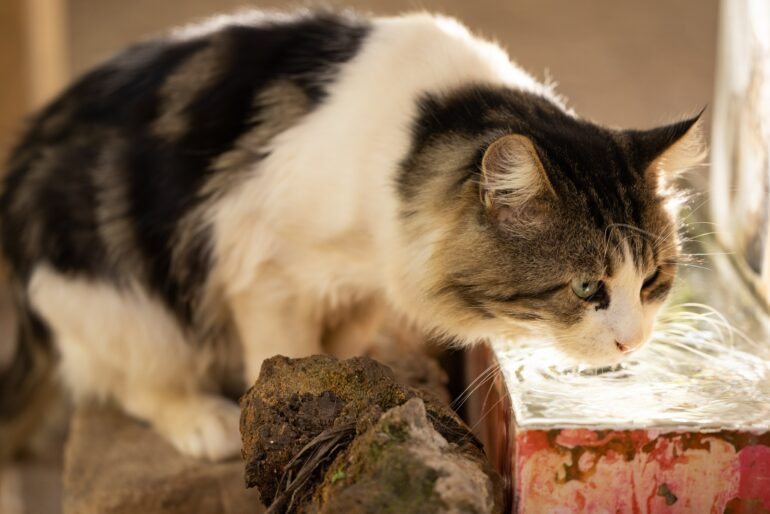Choosing the right diabetic cat food is crucial for managing your cat's diabetes and ensuring overall health and well-being. Diabetic cat food is specially formulated to meet the unique nutritional needs of cats with diabetes, helping to regulate their blood sugar levels and prevent complications. However, with so many available options, it can be challenging to know what to look for when selecting the best food for your diabetic cat. In this article, you will find crucial advice on selecting the most suitable cat food for diabetic felines, helping you make informed decisions about your cat's diet and care.
Tips To Consider When Planning a Diet for Your Diabetic Cat
Low-Carbohydrate Diet
Diabetic cats cannot produce enough insulin, which causes high blood sugar levels. Reducing the amount of carbohydrates in their diet can help manage their condition. Look for diabetic cat food containing low carbohydrate levels and high protein levels.
High-Quality Protein
Diabetic cats require a diet rich in high-quality protein. Look for cat food that contains meat as the primary ingredient. Avoid cat food that contains fillers or by-products.
Fiber Content
Fiber is important for diabetic cats as it helps regulate their blood sugar levels. Choose cat food that contains moderate levels of fiber. However, it is important to note that too much fiber can lead to digestive upset.
Feeding Schedule
A regular feeding schedule is important for diabetic cats. Divide your cat's daily food intake into smaller meals throughout the day. This helps regulate their blood sugar levels and prevents overeating.
Water Intake
Diabetic cats may have increased thirst due to frequent urination. This increase in thirst can lead to dehydration if a cat does not have access to enough water. It is always important to provide fresh and clean water to your diabetic cat and to monitor their water intake. If you notice that your cat is drinking significantly more water than usual, it may be a sign that their diabetes is not under control. In this case, it is important to consult with your veterinarian to adjust your cat's diet and medication.

Engin Akyurt on Pexels
Treats
It is okay to give your diabetic cat treats, but choose low-carb and high-protein options. Avoid giving high-carbohydrate treats like biscuits, bread or pasta.
Blood Sugar Levels
Regularly monitoring your cat's blood sugar levels ensures their diabetes is well-controlled. Work with your veterinarian to determine the frequency of monitoring and the best method for testing.
Exercise
Exercise can help maintain your cat's healthy weight, essential in preventing insulin resistance and reducing the risk of developing diabetes. In addition, improving insulin sensitivity is one of the benefits of exercising that can assist in maintaining blood sugar at moderate levels, making it an important component of diabetes management.
Supplements
Some supplements like omega-3 fatty acids and antioxidants can help improve insulin sensitivity in diabetic cats. Consult your vet about adding any new supplements to your cat's diet.
Homemade Diabetic Cat Food
An article in Splansh, a website for pet owners, provides tips on making homemade meals for diabetic cats cost-effectively, to ensure that they receive a nutritious diet without harmful additives. The article provides recipes for boiled chicken and vegetables, fish soup, scrambled eggs, boiled chicken and tuna fish.

Mq Huang on Pexels
Common Mistakes To Avoid When Making Homemade Diabetic Cat Food
When making homemade diabetic cat food, it's important to avoid common mistakes to ensure that it provides the necessary nutrients and helps regulate your cat's blood sugar levels.
Avoid High-Carbohydrate Ingredients
One of the most common mistakes in making homemade diabetic cat food is using high-carbohydrate ingredients, such as fruits or honey. These ingredients can raise a cat's blood sugar levels, posing a risk to cats with diabetes. Starchy vegetables like potatoes can also be problematic, and should be used sparingly.
Provide Enough Protein
Another common mistake is insufficient protein to support your pet's health. Cats need a diet high in protein; diabetic cats may need even more protein to help regulate their blood sugar levels. However, an excessive protein intake can cause renal issues in cats, so finding the right balance is important.
Balance Nutrients in the Cat's Diet
It's important to properly balance the nutrients in a diabetic cat's diet, including essential vitamins and minerals. Homemade cat food should provide your cat with all the nutrients they need to stay healthy, but it can be challenging to get the right balance. Working with a veterinarian is essential to ensure that the cat's dietary needs are met and that you are monitoring their blood sugar levels regularly.
Use Recipes Specifically Designed for Diabetic Cats
Finally, it's important to use recipes specifically designed for diabetic cats. Not all cat food recipes will meet the unique dietary needs of diabetic cats, so it's important to find appropriate recipes.
Conclusion
When choosing diabetic cat food, it is important to check the food labels carefully and select high-quality, well-balanced food that meets your cat's nutritional needs. Gradual diet changes are recommended to avoid digestive upset. Regular check-ups are also important to monitor your cat's diabetes, overall health and detect complications early on. With proper nutrition and care, diabetic cats can live happy and healthy lives.






